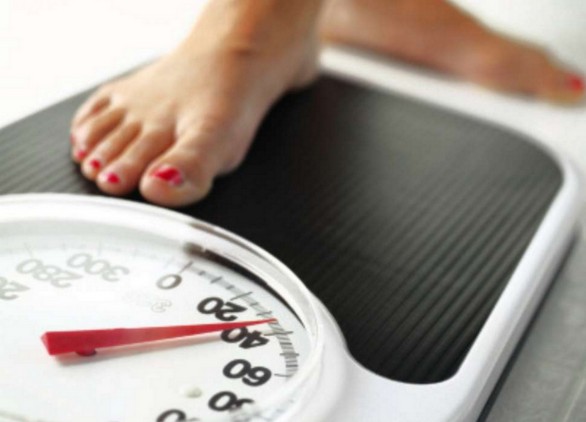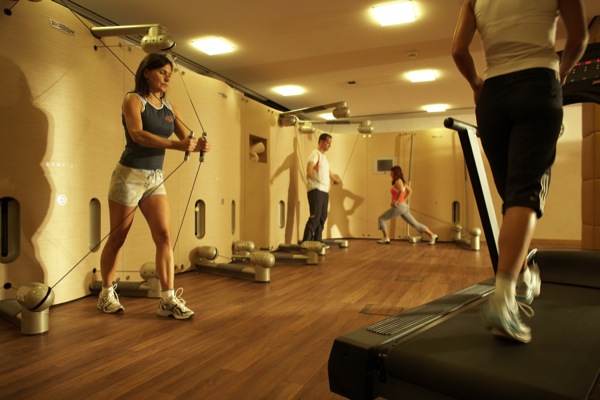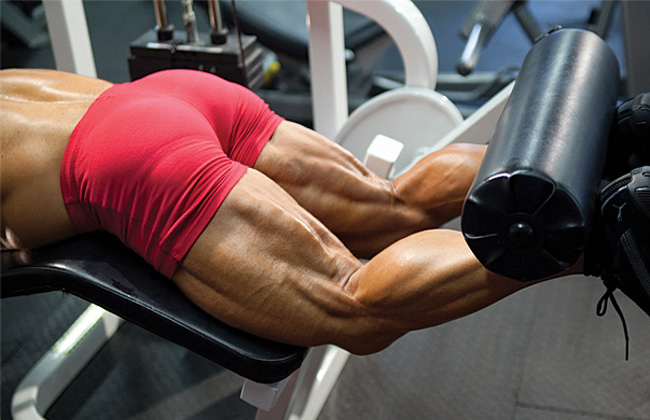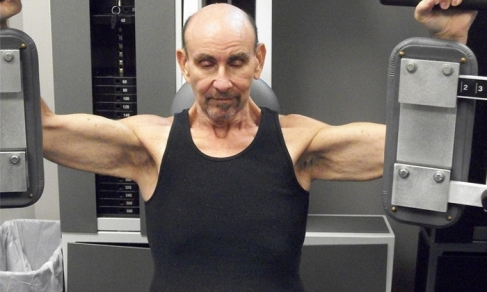More Articles
Motivation
How to ditch the scale in 30 days
For so many of us who are trying to lose or manage our weight, the scale is our main tool for measuring our progress; unfortunately, we often allow it to measure our self-worth, too. Learn how to stop this obsession!

How many times have you stepped on the scale, full of hopeful anticipation, only to be disappointed by the number staring back at you? Suddenly, that great feeling of accomplishment you had vanishes and you tell yourself that, again, you failed. No matter how hard you try, you can't lose weight. Sound familiar?
For so many of us who are trying to lose or manage our weight, the scale is our main tool for measuring our progress; unfortunately, we often allow it to measure our self-worth, too.
While the scale can be a good way to measure progress, it shouldn't be your only indicator of health and change. In fact, using it as your only form of measurement can result in obsession, negative thinking and a possible decrease in your motivation level.
For people who weigh themselves daily (or even multiple times a day), the idea of giving up the scale can be scary. But I guarantee that once you do it, you'll be happier, have a more accurate self-image and better relationship with your body. If cutting yourself off from the scale cold-turkey is a scary—or downright impossible—proposal, follow this five-step plan to go from scale-obsessed to scale-free in just one month!
How
to Ditch the Scale in 30 Days
1.
Store the scale out of sight. Most
of us keep our scale in the bathroom, and it's one of the first
things we see in the morning. In fact, I bet before you're probably
even fully awake, you hop on it to see if you dropped weight
overnight. The first step in breaking free from the number on the
scale is to put the scale away; out of sight, out of mind. Whether it
goes under the bed, in a closet or in a drawer, get it out of your
everyday sight. When you can't see it, you'll be much less tempted to
hop on as frequently.
2.
Start your day with a positive ritual. Because
you might struggle with breaking the habit of getting up and not
weighing yourself—even if the scale is out of sight—the next step
is to swap a new behavior for your weigh-in ritual. Instead of
stepping on the scale first thing in the morning, give yourself a
pick-me-up! Whether it's listening to a high-energy song that gets
you going, reading your goals aloud, giving yourself a short pep talk
or reciting a quotation that resonates with you, take just a few
minutes to get focused and pumped to continue making healthy changes.
3. Start measuring other healthy accomplishments. Just because you're not weighing yourself doesn't mean that you can't track your progress. Instead of measuring your weight loss using a scale, grab a fabric tape measure and record the circumference of your waist, hips, thighs and arms. Do this once a month and record them on your "Weigh-In and Other Measurements" page. Measuring your body size in this manner can be a much better way to gauge success because, unlike your body weight, which can fluctuate drastically, the true size of your body doesn't fluctuate wildly from day to day. Also, as you get fitter and build more muscle, you may gain muscle mass and lose fat but not see much change in your weight-loss numbers. You might even gain weight from increasing your muscle mass—and that's not a bad thing.
You can also track other indicators of health and well-being, such as your daily energy level, stress level, sleep quality and self-esteem. These wellness measurements may not change overnight, but if you're eating healthier foods and regularly moving your body, you will see changes over time. And unlike a number, these changes make huge differences in your quality of life.
Additionally, make sure to track your overall health and fitness progress. If you have health issues, you may even want to consider measuring your blood pressure, cholesterol and resting heart rate on a monthly basis. If you're really hitting the gym, try regularly assessing your fitness level with a quick and easy test, like how many push-ups or sit-ups you can do in a minute. There are so many ways to measure your success, so don't get wrapped up into just one number when other amazing changes are going on!
4. End your day with a pat on the back. Now that you're in the habit of starting your day without the scale, begin to close each day with a dose of positive reflection. Take another few minutes before bed to write down at least one accomplishment from the day or one thing you love about yourself. Then, end by writing three things you're grateful for, large and small. All too often we get caught up in the mental ping-pong game of "I should have done that workout" or "I should not have eaten that." When you regularly practice gratitude, it puts everything into perspective and helps you see that a minor slip-up here or a missed workout there isn't the end of the world. Always recognize the opportunity to learn from it, and move on.
5.
Weigh in after a month. Once
you've followed the steps above for a full month, they should start
to feel like a habit, and you most likely won't be thinking about the
scale nearly as much. You might also be feeling more confident,
energized and stronger. If this is the case, it's time to take your
scale out of hiding. Before getting back on the scale, revisit all of
the success and progress you've recorded during the last four weeks.
Then take a deep, peaceful breath and step on that scale. Does the
number surprise you? How does it compare to your inches lost? And the
biggest question of all: Does it really matter?
If you
feel like you've fully broken free from the scale and your weight
hasn't affected your feelings about your body or your mood for the
day, put the scale away and keep up with steps two, three and four.
Then, try weighing yourself weekly. If the obsession creeps back or
if you get down on yourself about the number, repeat this month-long
process again until you've broken free for good!
Src: sparkpeople.com
 15
15
14 Tips for Starting and Sticking with a Workout Routine
Stop failure before it starts. 14 tips that make you stick to your workouts.

How to Prevent Injuries When It Gets Cold
Winter is fast approaching, meaning we're soon going to be running, jogging and training in cold weather. Unless you prefer to be cooped up in the gym, you will find that your risk of injury is much higher in the winter.

Too skinny?Gain Weight – the right way!
Most people are busy trying to lose weight so if you are one of them trying to gain weight or build up mass, you are going to find yourself in the minority. No wonder we received many requests to cover this topic – so here we

Fitness Care For Your Hamstrings
Stretching isn't always the answer. Here are 3 other approaches that can enhance your flexibility more quickly and effectively.





